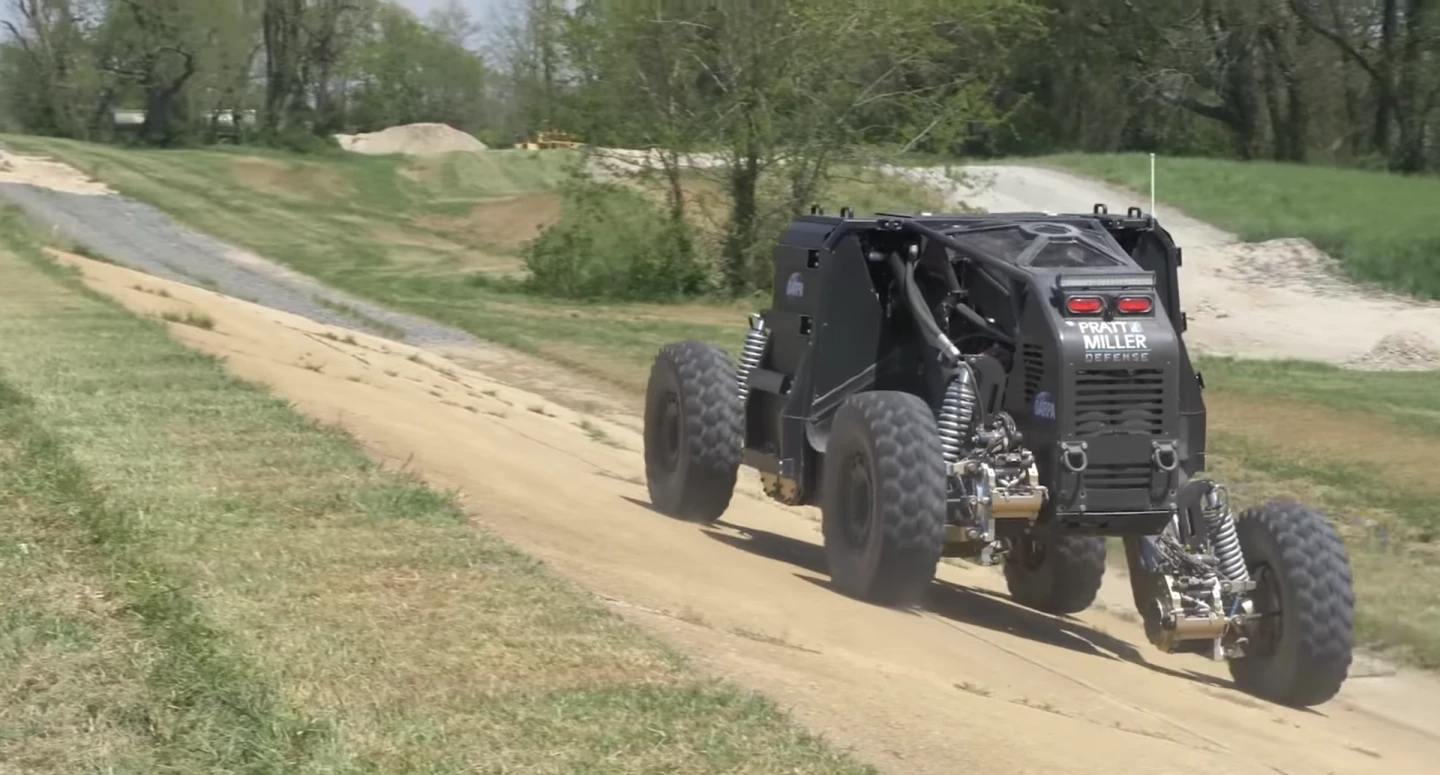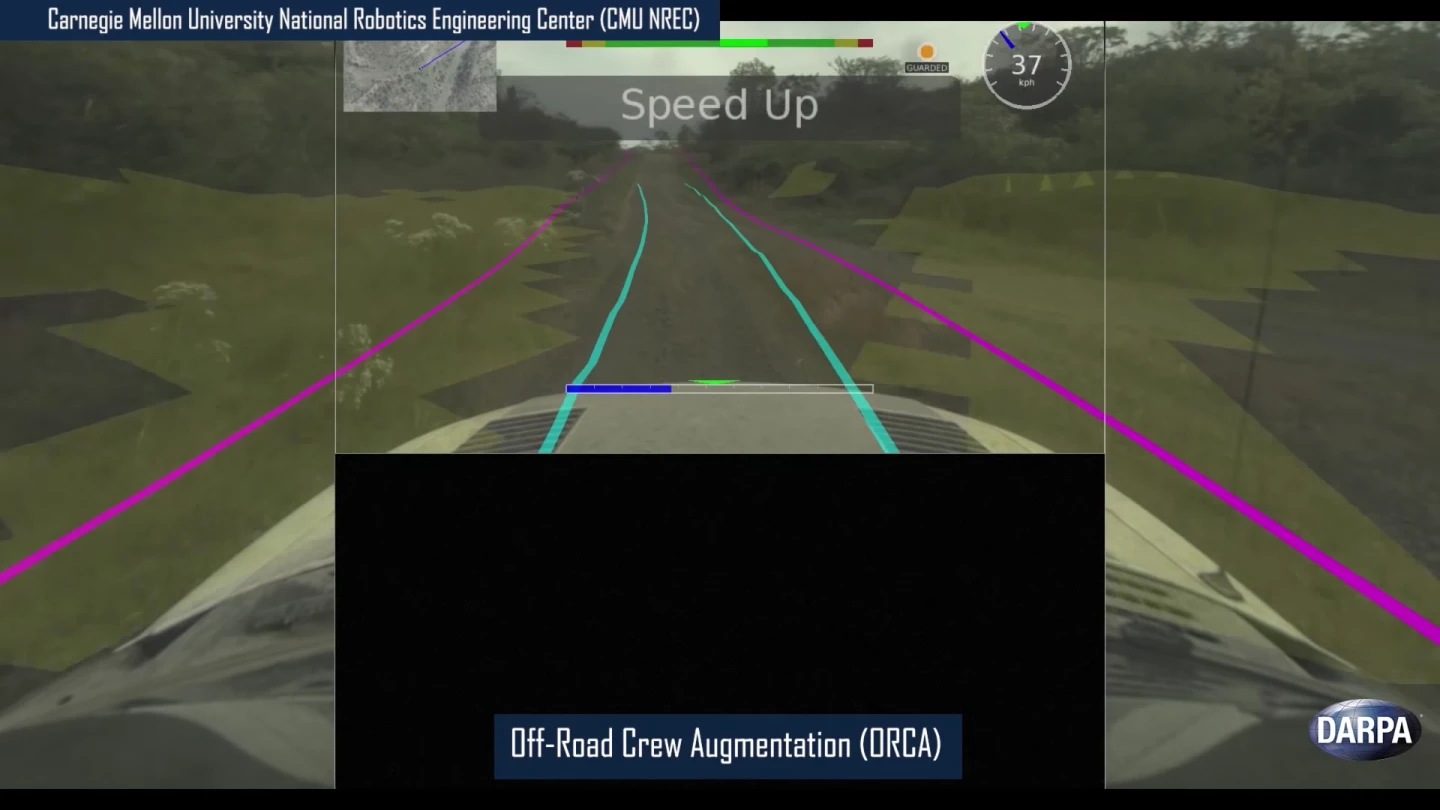Back in 2014, DARPA announced the launch of its Ground X-Vehicle Technology (GXV-T) program, an initiative designed to break through a single paradigm that has been weighing the military down in ground combat. That paradigm is the ever-escalating vendetta between tanks and anti-tank guns.
Artillery designers keep making bigger anti-tank guns, and in response the tank designers have to load them up with more and more armor, to the point where the M1A2 Abrams (the main battle tank of the US Army) now weighs a staggering 72 tons.
That's nearly twice the weight of a semi-trailer loaded to its maximum legal capacity of 40 tons, and it makes the modern tank a real pain to deal with, from the build, maintenance and deployment, right through to the end use. They're not what you'd call light-footed or agile, and their sheer bulk can damage or destroy roads or bridges that aren't up to the task.
DARPA has thus been working on what comes next: smaller, lighter, more nimble vehicles that have tricks other than massive armor up their sleeve when it comes to surviving on the battlefield.
Last month, the GXV-T program demonstrated some of the remarkable technologies it's been working on. And while they're far from finished, there are some pretty radical ideas in there. Let's take a look:
Reconfigurable Wheel Track (RWT)

Wheels let you go fast on the road, tracks give you better traction in sand, mud and dirt. So a team from Carnegie Mellon University's National Robotics Engineering Center (CMU NREC) has chipped in with a transforming wheel design that gives you a version of either, at the touch of a button.
In wheel mode, powerful arms in the hub open out to form a circular shape, and the entire rim rotates with the outer grippy track. In track mode, the hub stops dead as it closes down into a triangular shape, and the tread rotates around the hub. The transition takes just two seconds.
Electric In-Hub Motor

Working around the standard military 20-inch rim size, QinetiQ has come up with an electric hub motor fit for combat vehicle use. With all the acceleration, torque and traction benefits of a regular electric motor, the QinetiQ motor adds in three-stage gearing, internal thermal management and a liquid-cooled brake system.
Multi-Mode Extreme Travel Suspension (METS)

The goal here is high-speed travel over rough and uneven terrain, and Pratt & Miller's METS system is awesome to watch in action. It uses standard 20-inch rims, mounted to a dual suspension system. A short-travel suspension system gives six inches (15 cm) of regular off-road bump handling, but when the road gets really rough, an active high-travel suspension gives each wheel a whopping six feet (1.8 m) of travel – 42 in (107 cm) upward and 30 in (76 cm) downward from the center point.
In this way, the METS can get around while keeping the cabin upright in some pretty extreme situations. It's a little reminiscent of the Swincar "spider car" from 2015, offering a wildly agile way to get around at speed.
Enhanced 360-degree Awareness with Virtual Windows

Windows are a key point of vulnerability for any military vehicle, so Honeywell International presented a system that eliminates them altogether. The driver sits in the cockpit and views the world outside through near-eye VR goggles that effectively turn the cabin transparent for 360-degree vision. It seems to work; "numerous tests" have seen drivers complete off-road courses in these blacked-out cabins with no appreciable penalty to their course times.
This is of course reminiscent of the "transparent jet plane" concept implemented in the F-35 Lightning II Joint Strike Fighter, which uses a similar VR display and camera array to remove the plane from a pilot's field of vision.
Virtual Perspectives Augmenting Natural Experience (V-PANE)

Continuing with the augmented vision angle, Raytheon BBN Technologies has chipped in with a fascinating vision system that gives drivers the ability to see the world from a range of different perspectives, each generated from a series of video cameras and LiDAR sensors, something like a juiced-up version of the top-down camera view you can now get when parking some high-end cars.
The system creates a real-time 3D model of the car's surroundings, then generates useful visual perspectives from a straight-out-of-the-cabin view, to a high third-person view, to other views augmented with a model of the vehicle to assist with tight technical maneuvers. One would imagine this detailed 3D model would also assist with targeting systems should threats be identified.
Off-Road Crew Augmentation (ORCA)

Also from CMU NREC, the ORCA system uses a bunch of cameras and sensors to map out the off-road terrain in front of a vehicle and predict and plan the safest, quickest route through. The system is also capable of taking over and self-driving in an off-road situation, which is no small achievement. Phase 2 testing showed vehicles with the ORCA aids and visual overlays went faster and avoided nearly all pauses, which could expose a team to danger in the battlefield.
All these technologies are still under development, as the GXV-T program looks to identify which can be pushed forward into an operational capacity in the medium term. Check them out in action in a video below.
Source: DARPA















